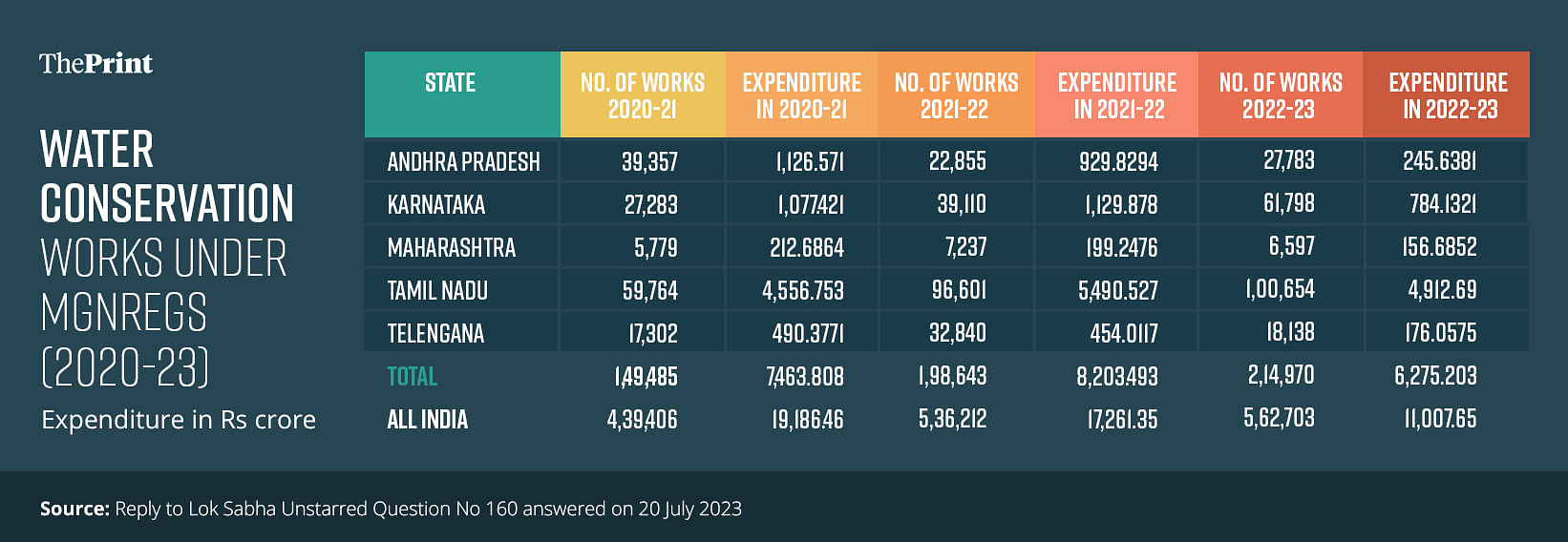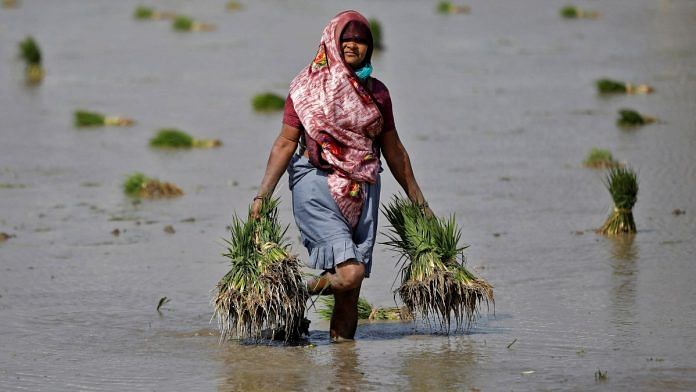Out of Gross Cropped Area of 197.32 million hectare, 52 per cent or 102.67 million ha was under irrigation by 2018-19. This year, there was a record deficit in rainfall in August. Under Mahatma Gandhi National Rural Employment Guarantee Scheme guidelines, the list of permissible works has nearly 75 per cent activities that directly support water conservation and water security. And in the last three years, an amount of Rs 47,455 crore was spent on water conservation and recharge works under MGNREGS. If these works were actually operational, they would have conserved excess rainfall in July 2023. Therefore, the shortfall of rains in August in rain-fed areas should not have had much adverse impact on crops.
Also read: Poultry and chicken keep food inflation low. Time India’s policymakers promoted it
How it rained this year
On 11 April, IMD issued its forecast of a normal monsoon — 96 per cent of LPA with an error margin of ± 5 per cent. In its second forecast on 26 May, IMD reiterated that the monsoon rainfall is most likely to be normal (96 to 104 per cent of LPA) of 87 cm with an error margin of ± 4%.
In June, the overall rain deficiency was 9 per cent but east and northeast regions received 21 per cent deficit. The deficiency in Bihar and West Bengal was 48 and 30 per cent, respectively. The north-west region received excessive rainfall (46 per cent above normal) while Western Rajasthan saw a deluge with 287 per cent excess. The southern peninsula received 45 per cent lower rainfall.
During July, India received 13 per cent more rains than its LPA. All the regions received excessive rains except the east and northeast India, which experienced 32 per cent less than LPA. Jharkhand (-47 per cent) and Bihar & West Bengal (-48 per cent) reeled under drought-like conditions. The Southern peninsula, however, received 45 per cent more rainfall than LPA. Karnataka, Telangana, Maharashtra had no deficiency in July. Even the drought prone regions of Vidharbha, Marathwada and parts of Gujarat and Rajasthan received excessive rainfall. These are the areas in which agriculture is largely rain-fed.
By the end of July, pulses and oilseeds had been sown in 96.8 lakh ha and 171 lakh ha, respectively. Tur, urad and moong are major kharif pulses. Cotton had been sown on 116.7 lakh ha. In southern and western India, a large part of this would be in rain-fed areas.
August proved to be the worst of monsoon months and the country received 36 per cent less rainfall than LPA. This was the lowest since 1901.
South peninsula and central India received 60 per cent and 47 per cent less rainfall, respectively. Fortunately, east UP, Bihar and West Bengal, which were deficient in July, received normal rains in August. From Punjab to South Interior Karnataka, most of India received highly deficient rainfall. Karnataka and Maharashtra were the worst hit.
In September, all India rainfall was 13 per cent over LPA. Except for North-Eastern states, eastern UP and Haryana, all the regions received normal or above normal rains. It was a boon for farmers in irrigated areas as they saved on diesel cost. The rains were also welcome for sugarcane crop in Maharashtra and Karnataka which was affected due to low rainfall in both June and July. These rains would have also benefited the pulses and oilseeds crops.
In the irrigated areas, the crops do not suffer much from the impact of deficient rainfall. Even if the water table in these regions is going down, the farmers do not allow the crops to wither by digging deeper tube-wells and using diesel pumps. Punjab, Haryana, West UP, Telangana and several other regions are examples of this.
In rain-fed areas, the farmers depend on monsoon rains and deficient and erratic rainfall may have an extremely adverse impact on the health of the crop.
Also read: Indian tur dal needs urgent attention. Depending on African imports stifles our market
Water harvesting under MNREGS
The Union Government has been implementing several schemes for rainwater harvesting and conservation. Over the years, water harvesting projects have also been liberally funded under MGNREGS (Table below).

According to an evaluation study by the Institute of Economic Growth, Delhi (2018), sponsored by the Ministry of Rural Development, 76 per cent of the user households had rated the quality of the assets created under the Natural Resources Management component of MGNREGS as good or very good. About 78 per cent of the households surveyed had also reported rise in the water table as a major ecosystem gain.
If the money under MNREGS was well spent and the structures were adequately maintained, the farmers in rain-fed areas should have been able to conserve the excessive rainfall in July and use the same for irrigating their crops in the rainfall deficient month of August. In this event, the production of pulses, millets, cotton and sugar cane should not have suffered.
In a few days from now, the Ministry of Agriculture will release the first advance estimate of production of kharif crops. Even though estimate of production is not given state wise, it will give an idea of the government’s assessment of the impact of erratic monsoon on kharif crops.
We think that this year provides a good opportunity to conduct an independent technical evaluation of the actual success of the water conservation works in providing irrigation, especially in rain-fed areas. Data captured by satellites should be analysed and its report on filling up these water structures should be released.
Hussain and Mohapatra are former Secretaries to Government of India in the Ministries of Agriculture and Rural Development respectively. Views are personal.
(Edited by Anurag Chaubey)



